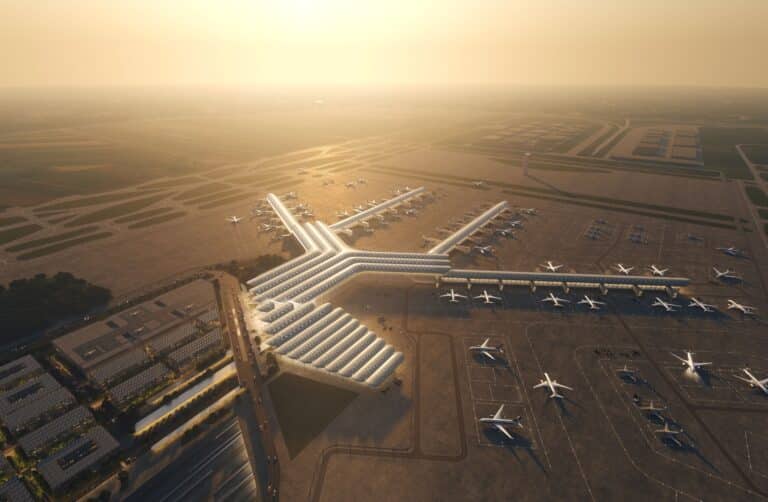High demand residential plots
The prices of investment land are stimulated by the very limited supply of plots in attractive locations in the largest agglomerations in the country.
Recently, there have been major changes on the investment land market in Poland. The expectations of plot owners are still high, however buyers are willing to pay more for plots that are ready for the construction of multi-family housing projects. When an attractive plot of land comes up for sale, there are many people willing to buy it. Developers are actively looking for land because the demand for apartments, stimulated by government subsidies, is not decreasing and the market offer of new apartments is becoming increasingly meager.
At the same time, the slowdown in the warehouse sector means that prices of land for large logistics projects are not growing as dynamically as in the case of housing. Less investor activity in this area is the result of a decline in demand for space and the withdrawal of a large number of tenants from preliminary agreements, which were not finalized last year. The number of new warehouse projects has recently decreased by more than half.
The implementation of warehouse and production projects depends strictly on the amount of contracted space. Alternatively, dedicated build-to-suit projects are being implemented, such as the Intel factory in Miekinia near Wroclaw. The Semiconductor Integration and Testing Plant, which will be built on an area of almost 300 ha, is the largest foreign investment in Poland and in the high-tech industry in this part of Europe.
Alliances
The third interesting trend visible on the land market are innovative forms of contacts, which are based on dynamic economic changes. The number of alternative forms of contracts is increasing, such as barter exchange, shares in development projects or joint ventures of land owners and developers. This allows owners to obtain higher final revenues and developers to optimize debt servicing costs, which are still very high.
An example of such a solution is the letter of intent signed by Develia with a company controlled by pension funds to establish an entity that will build 90,000 sq m. of residential and retail space on a plot of land in Gdynia. The developer will have a majority share in exchange for a cash contribution and will be responsible for management and execution. The company will implement the project with partners: Semeko Group and investment funds.
The prices of investment land are stimulated by the very limited supply of plots in attractive locations in the largest agglomerations in the country. After stabilizing in 2022, the valuation of investment plots increased sharply again last year. The reason was the shopping frenzy fueled by the ‘Bezpieczny kredyt’ 2% government subsidy program. This year, the housing boom continues. Developers are intensifying their search for land. They want to meet this unprecedented demand, which will likely continue due to another government support program ‘Mieszkanie na start.’
Land for apartments
The most sought-after is land on which construction can be started quickly, located in places with developed infrastructure. Such plots are extremely rare now. If they appear on the market, the offer is repeatedly outbid. Recently, a plot of land of less than 5,000 sq m. located at Cynamonowa Street in Warsaw’s Ursynow district, was auctioned for over PLN 82 million. The buyer paid more than twice the asking price. Warsaw is seeing plot purchase transactions of record value. Land is bought for over PLN 150 million. For instance, in Wroclaw, a plot of land measuring several thousand square meters was sold for over PLN 50 million.
The largest real estate development companies in the country have secured land for construction for the next few years. Leading companies can use them to construct a dozen or even around 20,000 apartments. Developers, however, think long-term and are constantly building their portfolios of land. Smaller entities have also declared a willingness to buy land, because the demand for apartments significantly exceeds supply.
Meanwhile, new construction regulations, which are to come into force in April 2024, will further limit the availability of suitable land for apartment construction. The change in technical requirements will cause the parameters of the plots on which the investment will be possible and profitable to change to the detriment of investors. Moreover, some of the plots from developers’ portfolios will lose their investment value. Ultimately, this may result in a further increase in land prices suitable for implementing projects under the new rules.
Land for retail and mixed-use projects
Land is also sought for projects intended for institutional rental. We do not observe spectacular transactions in the PRS sector, but its resources are constantly growing. Both investment entities and developers operating in this market, such as Echo Investment, Vantage, Develia, Murapol and Cavatina, are gradually expanding their portfolios of premises. The announcements of companies active in the PRS sector show that they want to build a total of several dozen thousand apartments for rent in the upcoming years, even though they have to face similar challenges to developers building apartments for sale. The number of entities implementing projects in this sector is growing and more entities are declaring their interest in cooperation.
Investment land for retail parks, which are popping across Poland is also in demand. Implementation of projects in this format attracts high rates of return. Retail parks are currently very popular, especially among private investors. Apart from real estate development companies that have been building in this sector for years, mainly domestic companies and private capital invest in commercial projects. The entry threshold is lower and construction is less time-consuming. This type of facilities are built mainly in smaller towns, where land is more available and not as expensive as in the large agglomerations.
The market also records individual land transactions involving the purchase of plots for mixed-use investments. For example, at the end of 2023, a hectare of land located in the center of Warsaw at Chmielna Street intended for a mixed-use project, was purchased for over PLN 145 million by Cavatina.







